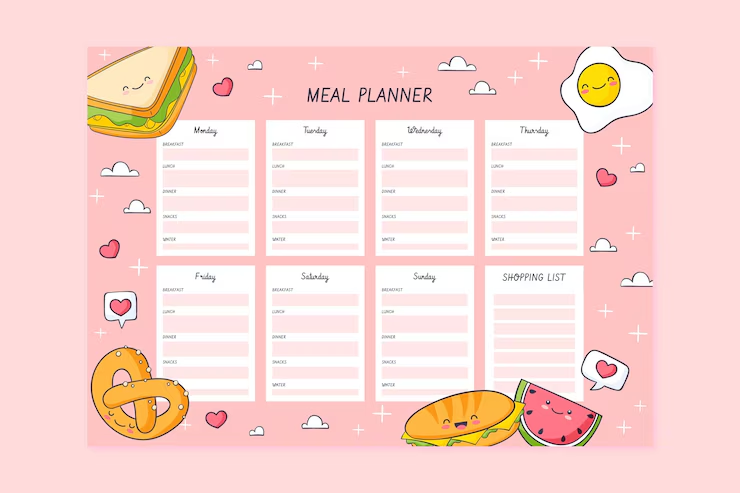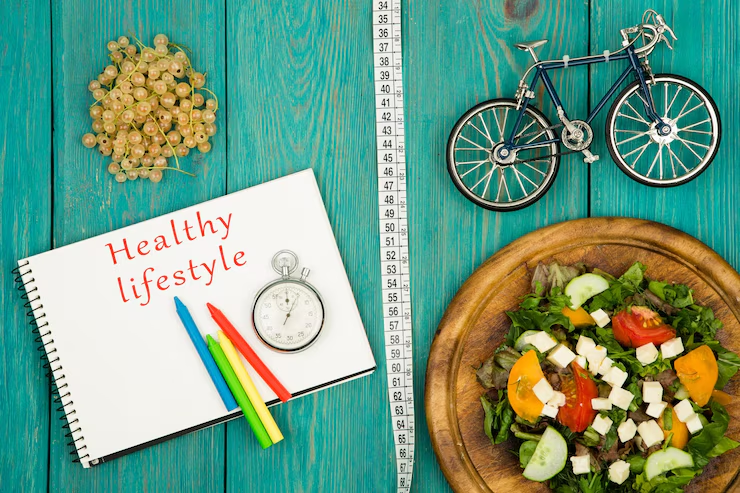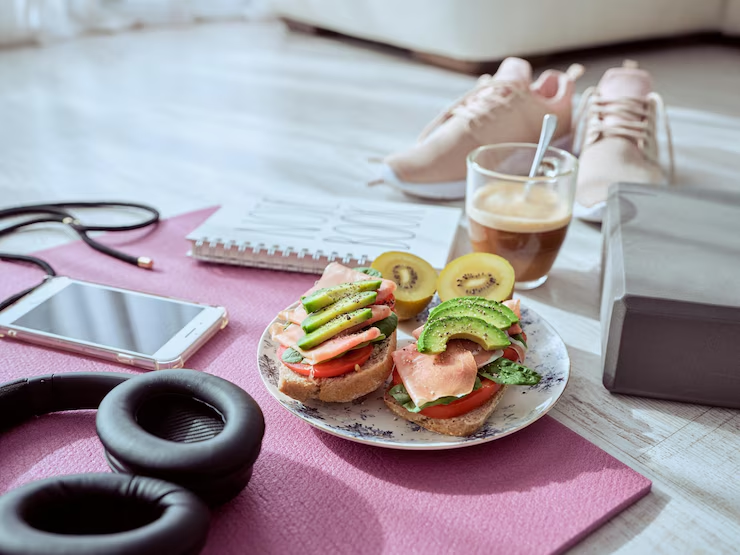Simple Diet Plan for Weight Loss A Complete 2500 Word Guide
Losing weight doesnt have to be complicated. Simple Diet Plan for Weight Loss A Complete 2500 Word Guide. In fact the most effective strategies often come from simple consistent habits over time. Whether youre just starting out or looking to refine your routine this guide offers a practical and sustainable approach to weight loss that focuses on real food balanced nutrition and daily routines anyone can follow.
Simplicity Works in Weight Loss
Many people fail at weight loss because they follow extreme diets that are hard to maintain. Simple diet plans on the other hand are easier to follow and more likely to result in long-term success. Simplicity eliminates confusion reduces stress and helps build healthier relationships with food.
Key Advantages of Simple Diet Plans
Easy to follow and stick with
Less meal prep stress
Promotes long term habit building
Encourages nutrient-dense food choices
Fundamentals of a Simple Diet Plan
Before jumping into what to eat its important to understand the building blocks of a weight loss friendly diet.
Calorie Control
When you ingest less calories than your body expels you lose weight. We call this a caloric deficit. Having a basic notion of how many calories you consume each day might be helpful but you dont have to monitor every calorie.
Tip A daily deficit of 500 700 calories is typically enough to lose 1 to 1.5 pounds per week.
Macronutrient Balance
Your diet should include all three macronutrients: proteins carbohydrates and fats in the right proportions.
Proteins: Vital for muscle maintenance and appetite control.
Carbohydrates The bodys primary energy source. Opt for complex carbs.
Fats: Essential for hormone health and nutrient absorption. Choose healthy fats.
Hydration
Drinking water is often overlooked in diet plans. Water boosts metabolism reduces cravings and supports digestion.
Foods to Focus On
Let’s explore the types of foods that should make up the foundation of your simple diet plan.
Whole Grains
Brown rice
Quinoa
Whole wheat bread
Oats
These provide energy and fiber, keeping you full longer.
Lean Proteins
Chicken breast
Turkey
Eggs
Lentils
Tofu
Protein increases satiety and helps maintain lean muscle during weight loss.
Healthy Fats
Avocados
Olive oil
Nuts and seeds
Fresh Fruits
Leafy greens broccoli carrots cucumbers
Apples berries bananas oranges
These are low in calories and rich in fiber vitamins and minerals.
Simple Weekly Meal Plan (Sample)

Heres a sample plan thats easy to follow and adjust to your preferences It includes three meals and two snacks each day.
Day 1
Breakfast Oatmeal with banana and a sprinkle of chia seeds
Snack Handful of almonds
Lunch Grilled chicken salad with olive oil dressing
Snack Greek yogurt with honey
Dinner Baked salmon quinoa and steamed broccoli
Day 2
Breakfast Two boiled eggs and whole grain toast
Snack Apple with peanut butter
Lunch Turkey wrap with lettuce and tomatoes
Snack Carrot sticks with hummus
Dinner Stir fried tofu with vegetables and brown rice
Day 3
Breakfast Smoothie (spinach berries banana almond milk)
Snack Cottage cheese with cucumber slices
Lunch Lentil soup with a slice of whole wheat bread
Snack Mixed nuts
Dinner Grilled shrimp with sweet potato mash
You can rotate this for the rest of the week.
Portion Control Without Counting Calories
Instead of measuring everything use your hands
Protein Palm-sized portion
Carbs One cupped hand
Veggies Two fists
Fats: Thumb-sized portion
This visual approach makes meal prep stress-free and manageable.
Avoid Common Diet Pitfalls

Skipping Meals
This often leads to overeating later. Try to eat every 3–4 hours.
Overeating Healthy Foods
Even nutritious foods can cause weight gain in excess. Stick to portion sizes.
Too Many Liquid Calories
Sodas, fancy coffees, and even fruit juices can add unnecessary sugar and calories.
Emotional Eating
The practice of utilizing food to manage emotions instead of sating physical hunger is known as emotional eating. Emotional eating is a problem for many individuals when they are stressed depressed bored or even happy Although it could provide momentary solace it frequently results in overeating shame and a halt to weight reduction efforts
The Reasons Behind Emotional Eating
The hormone cortisol which is released in response to stres can heighten hunger and desires for meals high in fat or sugar
People may turn to food for solace while experiencing negative feelings like worry loneliness, or grief
Habits formed from childhood such as being rewarded with sweets can carry over into adulthood.
Boredom or fatigue may also cause unnecessary snacking as a distraction or energy boost
Signs of Emotional Eating
Craving specific comfort foods (like ice cream or chips)
Eating even when youre not physically hungry
Feeling guilt or regret after eating
Eating in response to emotions rather than hunger cues
Manage Emotional Eating
Identify your triggers Keep a journal to track when and why you eat
Find alternatives Go for a walk talk to a friend practice deep breathing, or engage in a hobby
Practice mindful eating Eat slowly focus on your food and pay attention to hunger and fullness
Dont deprive yourself A restrictive diet can increase cravings Allow occasional treats in moderation
Build a support system Having someone to talk to can reduce emotional strain and unhealthy eating patterns
Recognizing and addressing emotional eating is a crucial part of any successful weight loss journey By developing healthier coping mechanisms youll build a more positive relationship with food and improve your overall well being.
Simple Food Swaps
Making small changes to what you already eat can help reduce your calorie intake.
Unhealthy Option Healthier Swap
White bread Whole grain bread
Soda Sparkling water
Chips Roasted chickpeas
Ice cream Frozen Greek yogurt
Creamy dressing Olive oil + vinegar
Snacking the Smart Way
Healthy snacks can prevent overeating at meals. Some great options:
Boiled eggs
Sliced cucumbers with hummus
A piece of fruit with nuts
Air-popped popcorn
Stay Consistent with These Simple Habits
Plan your meals weekly.
Cook more at home.
Keep healthy snacks handy.
Track your progress.
Weigh yourself weekly (not daily).
Physical Activity Complements Diet
Although a nutritious diet is the cornerstone of weight loss exercise is an essential auxiliary factor Exercise improves your general health increases metabolism develops lean muscle and elevates your mood and energy levels in addition to helping you burn more caloriesPhysical activity may greatly speed up weight loss and enhance long term success when paired with a healthy diet
Benefits of Physical Activity in Weight Loss
Burns Calories Regular exercise increases your daily energy expenditure helping create a caloric deficit
Preserves Muscle Mass While dieting your body may lose muscle along with fat Strength training helps preserve lean muscle
Boosts Metabolism Muscle tissue burns more calories at rest than fat and staying active helps keep your metabolism strong
Reduces Belly Fat Cardio and strength exercises both help target stubborn fat particularly around the abdomen.
Improves Mental Health Exercise releases endorphins reducing stress anxiety and emotional eating.
Types of Exercises to Include
Cardio Great for burning calories and improving heart health
Strength Training Essential for building and maintaining muscle
Flexibility and BalanceHelps prevent injury and supports overall well being.
Suggested Routine
Cardio 30 minutes 5 days a week
Strength Training 2 3 times per week
Stretching/Yoga 10 15 minutes daily or post workout
Even small amounts of daily movement like walking taking the stairs or doing chore contribute to your activity level. The key is to stay consistent and find activities you enjoy making exercise a natural part of your weight loss journey.
Recommended
Cardio Walking cycling jogging (30 minutes/day)
Strength training 2 3 times a week
Stretching/Yoga Improves flexibility and reduces stress
When to Seek Professional Advice
You should consult a dietitian or doctor if:
You have a chronic health condition
You’re significantly overweight or underweight
You’ve struggled with disordered eating
They can help you tailor a safe and effective plan.
Motivation and Mindset
Weight loss isn’t just about food — it’s a mental journey too. Stay motivated by:
Setting small, achievable goals
Celebrating non-scale victories (e.g., more energy, looser clothes)
Keeping a journal of your progress
Conclusion
A simple diet plan for weight loss is not about starving yourself or cutting out entire food groups its about making smart sustainable choices that fit your lifestyle By focusing on whole foods balanced meals proper hydration and portion control you can lose weight effectively without feeling deprived
Consistency is the key.Small daily habits like preparing your meals at home choosing healthier alternatives and listening to your bodys hunger cues can lead to long term success Remember theres no one size fits all solution so dont be afraid to adjust the plan according to your needs and preferences
Pair your diet with regular physical activity stay motivated with short term goals and celebrate every step forward. Weight loss is not just about reaching a number on the scale its about creating a healthier more energized version of yourself
Start simple. Stay consistent. And trust that the results will come.







